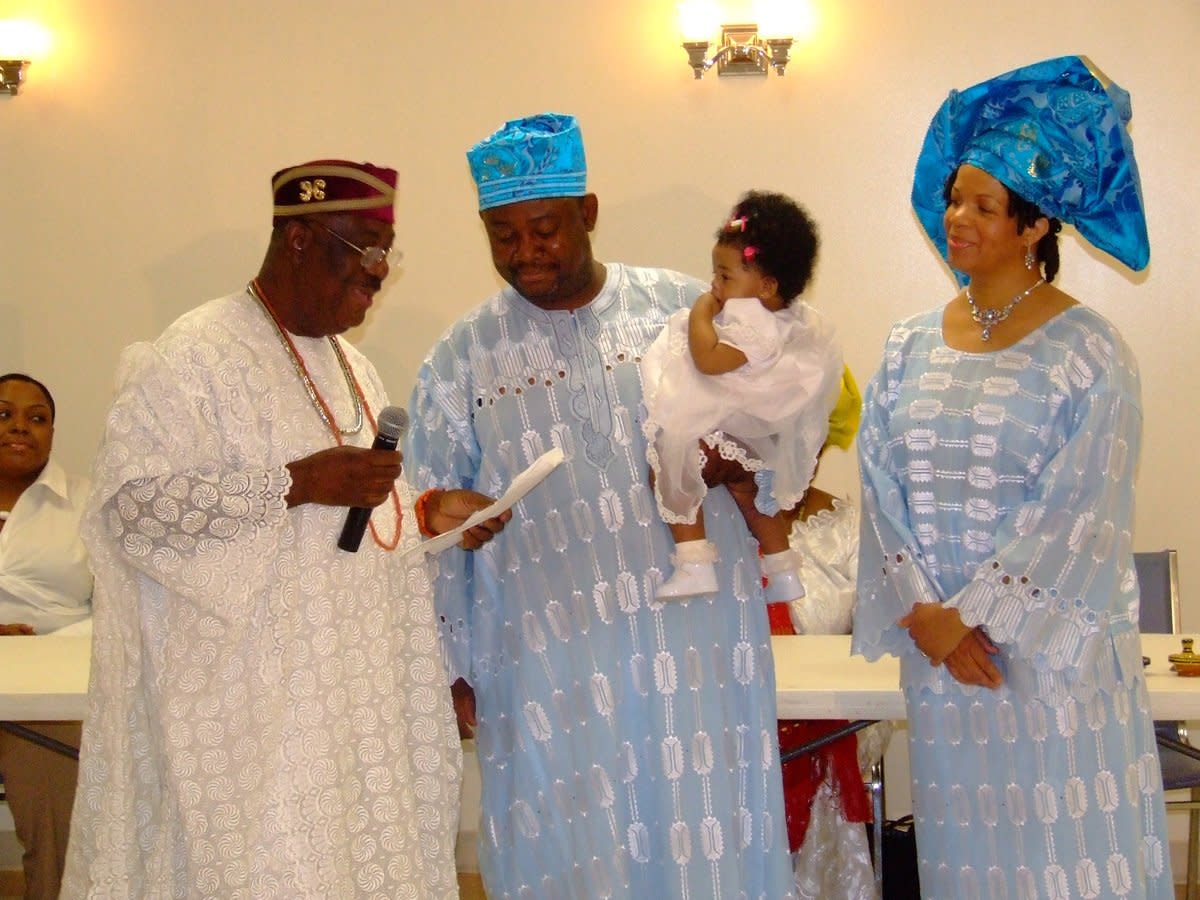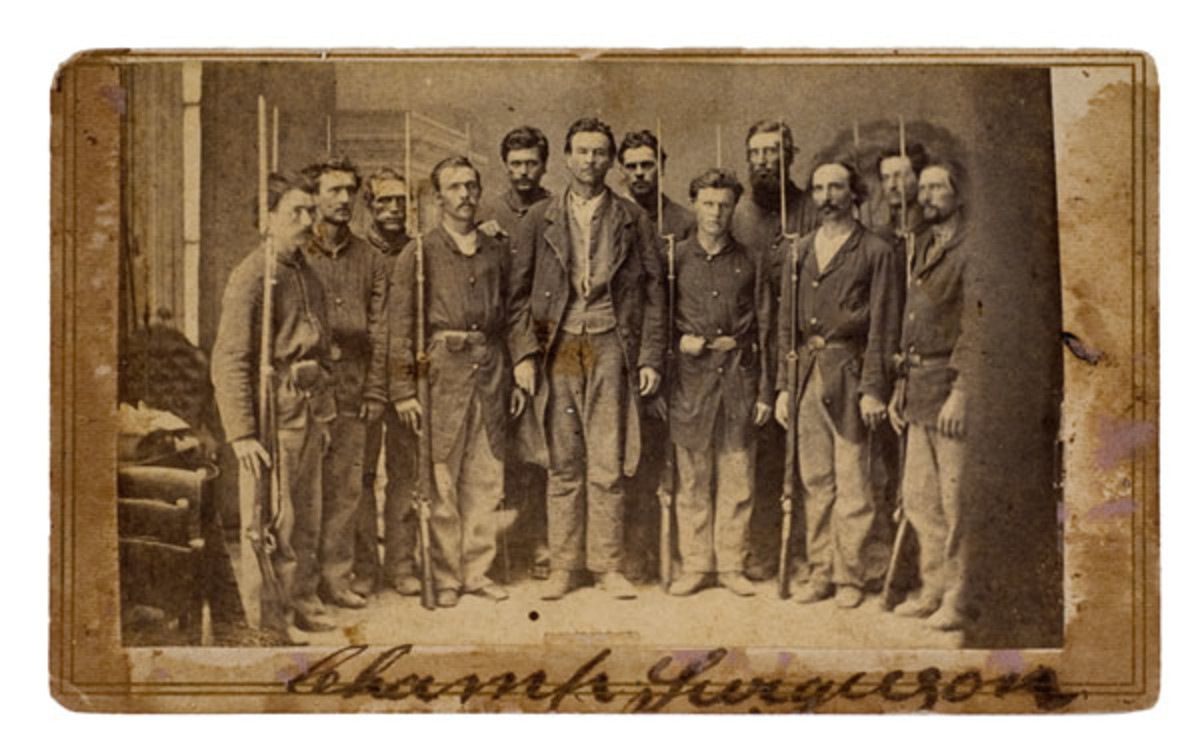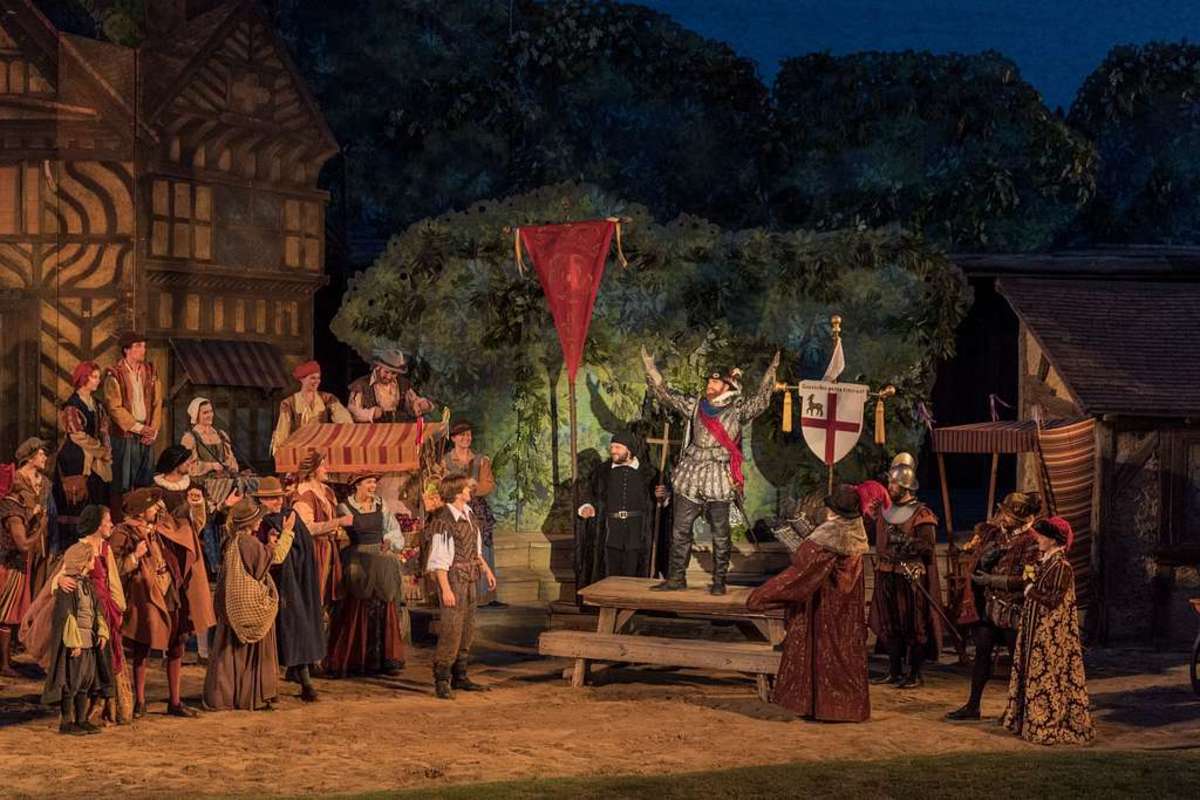- HubPages»
- Education and Science»
- History & Archaeology»
- History of the Americas
The Potlatch Ceremony (to Give Away)
The potlatch was a central west coast ceremony
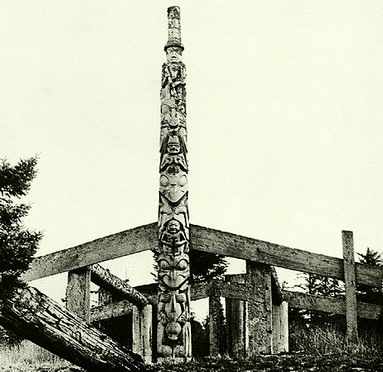
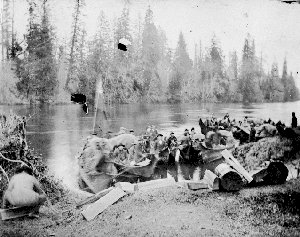
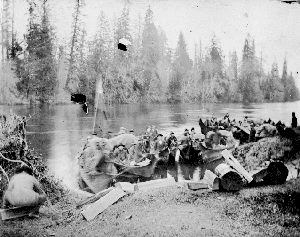
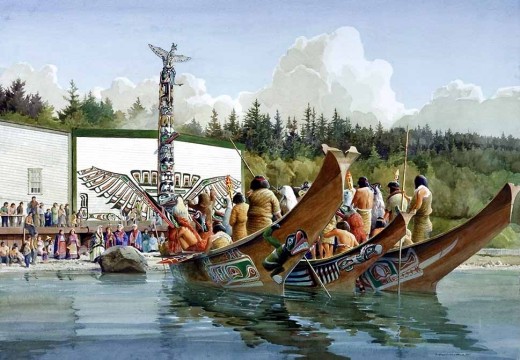
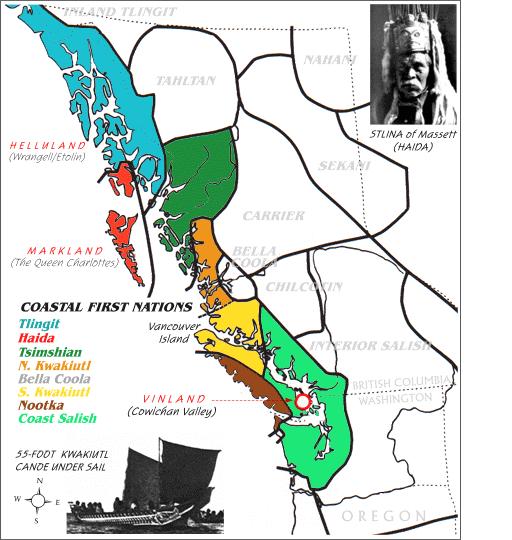
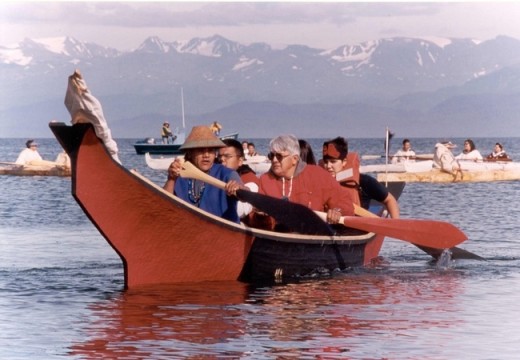
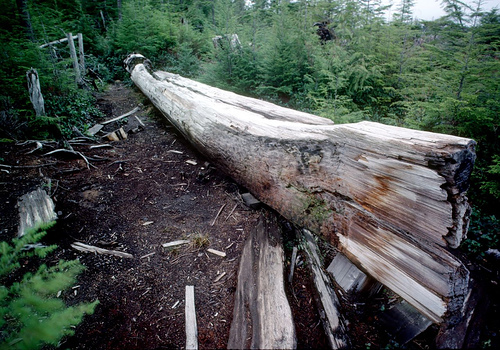
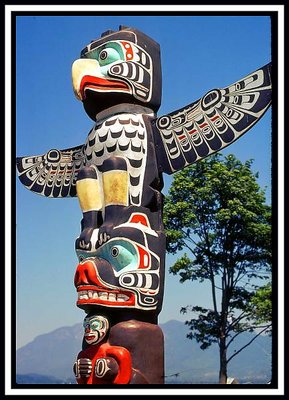
A West Coast First Nations' Ceremony
Long before Captain Vancouver arrived in their territorial region, the Haida, Nuxalk, Tlingit, Tsimshian, Nuu-chah-nulth, Kwakwaka'wakw, and Coast Salish gathered to celebrate in the Potlatch ceremony that continued long after Captain Vancouver left in search of the north west passage. The Potlatch was simply the concept of giving of gifts, much like what we do at Christmas, but with far more seriousness and immediate practicality. The main purpose of the Potlatch was the regional redistribution and reciprocity of wealth. It continued until banned and made illegal in the late 19th century by the US and Canadian governments.
During the long history of its annual celebration, whole groups would migrate to a designated gathering place where well constructed cedar longhouses were prepared complete with lots of massive totem poles, many of which are maintained to this day. They would celebrate by dances, singing, telling of various legends accompanied with complex dress and animated carved masks of all kinds. The gifts that were exchanged were designed blankets, dried foods like oilcans (candle fish), oil rendered from whale blubber, salt, sugar, flour, baskets, pottery, slaves between the wealthy and many other gifts. Some were bartered, but more was shared in a universal giving. In a fantastic display, some products were deliberately and publicly destroyed. When money entered the picture, whether wampum or gold, jade, silver and the like, that sometimes became the means of trade. As the Europeans became increasingly present, money also became stronger in influence, particularly when Europeans were involved in the Potlatch and required food. But Europeans would be as likely to trade valuable (to the First Nations) iron, copper and metal cooking pots and utensils and the occasional blunderbuss or flint-lock for dried food for which the ship born Europeans were desperate.
The West Coast First Nations lived in a veritable paradise compared to their counterparts in other parts of North America. The climate was mild, though usually wet along the coast, with winters that would make the plains and east coast envious. Food could be had all year long provided one knew where to look. Fish, whale, seals and other sea offerings were available year round. About the only difficulties these nations had, where the terrain, such as the mountains, the constant damp in the primeval arboreal rain forest which presented a challenge to dry food. But they had a work around in the form of smoking, especially during the copious salmon runs of the day where the rivers would be alive with salmon going to spawn that was so thick, the claim was that one could cross rivers by walking on their backs. About the only competition for this resource were the bears and sometimes the cougar and wolf. They also had a plenitude of berries, acorns, tubers and wild vegetables to the extent that they did not need to rely heavily on agriculture, yet were able to have sedentary villages, usually dotted close together along the coasts, islands and fiords. They formed an intense gathering culture and were busy year round with fishing and whaling in cedar dug out canoes, gathering of berries and nuts in season. Those that could, hunted mountain goat and mountain sheep along with white tailed deer and the like. They were seldom at want for food and thus had a copiously generous spirit that manifested in huge and long potlatches. Status was gained by how much one gave away as opposed to how much one can hoard. The greatest in the society therefore was the one who was the most generous. One of the chiefs described the meaning of potlatch to an anthropologist;
“Chief O’wax̱a̱laga̱lis of the Kwagu'ł nation described the potlatch in his famous speech to anthropologist Franz Boas,
"We will dance when our laws command us to dance, and we will feast when our hearts desire to feast. Do we ask the white man, 'Do as the Indian does?' It is a strict law that bids us dance. It is a strict law that bids us distribute our property among our friends and neighbors. It is a good law. Let the white man observe his law; we shall observe ours. And now, if you come to forbid us dance, be gone. If not, you will be welcome to us."
This statement sums up the openness of these communities. It was an offensive and oppressive slap across the face of these nations to ban and forbid this in contravention of the chief's statement. Yet, this is just what was done. Nevertheless, the potlach persisted despite the law, though in a much reduced and covert form. As the nations lived in a mountainous region, these policies were hard to absolutely enforce. But the law on the books made the potlatch a crime punishable with imprisonment for two to six months, even if you just invited someone to a potlatch who could be similarly charged with a misdemeanour under this ridiculous legislation.
The potlatch ceremonies were held primarily in the winter months as this was the least busy season. Otherwise, with the abundant gathering opportunities available all year round, almost all of them were otherwise engaged with gathering, preparing and storing. For some cultures, such as the Kwakwaka'wakw, elaborate and theatrical dances were performed reflecting the hosts' genealogy and cultural wealth they possessed from time immemorial. Many of these dances are also sacred ceremonies of secret societies like the hamatsa (known as the cannibal society and one of four secret societies), of a display of family origin from supernatural creatures such as the dzunukwal a wealthy and generous spirit being who would bestow all that was needed, but would steal children to eat in return of favor.
The potlatch also celebrated births, rights of passage, marriages, deaths, namings and the honoring of ancestors. The potlatch was indeed a gala affair! Each nation practiced differences and uniqueness among the different cultural groups along the coast from the Alaskan panhandle down to northern California. Each nation; by tribe and sometimes by clan had its own way of practicing the potlatch. Thus there was a very diverse presentation and meaning, which in itself could be very entertaining. The potlatch is quite a general term, since some cultures have many words in their language for all different specific types of gatherings. Still, the main purpose has been and still is the redistribution of wealth procured by families from the dawn of prehistory to the current day.
The Europeans also introduced copper in the 18th century that was to have a profound influence in the potlatch. It often came in sheets that could be worked into anything that was wanted of use.
Canada banned the potlatch in 1885 and it was banned later in the US at the urging or missionaries and government agents who considered it a wasteful and worse than useless custom. Let's examine and analyze this for a moment. Both the US, a growing bourgeois republic and Canada, a British colony, sought the ideal of accruing private wealth through profit and reinvestment of that into growing ones private business for ever more profit and expansion. Giving away and/or destroying useful things was counter-productive to this idea under the colonialist influence upon the First Nations by the US and Canadian government authority who were basically designates of tycoons and magnates, such as the railroad tycoon, William Ogden. No private profit can accrue under a system such as the potlatch. In fact, the potlatch was the reverse of the idea of gathering wealth to generate more wealth. Consider the fact for the moment that just a mere few decades previously, the plains nations were decimated in an engineered famine when the Bison were destroyed in a mass killing from railway cars by soldiers under the auspices of the Indian Removal Act. The vast wealth of the west coast, as far as the new inhabitants of the land who lived by another philosophy, thought that the wealth could be better used on the open market to generate profit.
The Potlatch
Missionaries of course, wanted converts to Christianity, “to civilize the pagans” and some of the First Nations converted, but far from all. The Christian mindset had changed over the millennia since its inception, where a more generous and sharing attitude prevailed. The latter form had lost that ideal and were somewhat opposite to the point of view of the open generosity of the west coast First Nations, who saw little need to convert. After all, with all their goods, why did they need to convert to something far more austere. But austerity is what they got when they suffered under a belated “Indian Removal Act”.
Before this, austere “announcement” the various First Nations described suffered other woes at the hand of the Europeans, primarily in the form of smallpox that spread like wildfire in the pathogen's preferred damp conditions for its dispersal. The immediate effect of the huge loss of numbers that succumbed and died to the disease due to a total lack of resistance, was a glut of everything that was used for giving away and trading. The result was that a lot of things fell to rot and wasting including entire villages of long houses, dug out canoes and fields of totem poles. This fact weakened these nations long before the anti-potlatch law came into effect.
The mountainous west coast was one of the last regions that was settled, even though there were a host of explorers in the form of Spanish and British explorers long before then. The reason is clear when one realizes that the west coast was about as far away as one could get from Europe due to several natural barriers, which included the mountains, the Pacific Ocean, Terra-Del-Fuego at the southern tip of South of America, the long passage through pirate ridden seas via the horn of Africa and the lack of a viable north west passage until very late in the conquest. Easy access came with the completion of the trans continental railway and then the west coast opened up. Gold discoveries in California and Alaska also spurred rapid development in a frenzy to get rich and brought with it lots of crime and disease. Thus, many of the nations were not legislated out their cultures until late in the game and even within the living memory of people until recently.
The culture of the Haida and Salish remain strong even today and they still practice their song, dance and story telling traditions, often for tourists in the summer in popular venues and city center locations. In 1986, Vancouver, BC hosted a First Nations pavilion at Expo '86' where a transmission video holographic presentation of the Thunderbird legend of the Haida was presented to the awe of spectators from around the world. This proved that the west coast Haida made the transition into the 20th and now 21st century, perhaps more successfully than most First Nations peoples. There are still well kept long houses to be found, such as in Hazelton and near Victoria, BC and totem poles decorate many modern metropolises and towns. They still practice the potlatch, now that the ban was removed in 1951 in Canada. The youth carve traditional masks and even some European descendants have taken to carving these items. All through the province of BC, one can find First Nations communities, both active and abandoned with long houses and totems in various conditions. There are even a few dug out cedar canoes, complete with their designs still in active use in this 21st century.
But, most individuals of the west coast First Nations, like their counterparts elsewhere all over the developed hemisphere are relegated to squalid reservations where there is chronic unemployment, overcrowding, disease, substance abuse and a malaise of hopelessness. Many youth seek to escape these deplorable conditions, in part because of the glorious past with a magnificent culture and in part due to the glitter, glamor and promise of the large gleaming cities of the white and now dominant culture. Many wind up in the skid row regions of the big cities and towns, no better off than the reservations because they are for the most part blocked form getting into jobs that would open up the city to them. Prisons in Canada are disproportionately made up of First Nations individuals who wind up there on various charges, but thankfully not for the potlach. In the courts according to one witness who did court room work as an artist, the First Nations people were often treated with utter contempt by the court authorities, much more so than the white counterparts who committed like crimes. One way or another, they run afoul of the law and this often due to a prevalent xenophobia that still exists. Canada in particular cannot boast due to the presence of the Ku Klux Klan, invited up in the late 1970s, that targets First Nations people as they form the prevalent minority population. This is perhaps one of the worst insults since in the beginning, the newly arriving Europeans were invited to and participated actively in the potlatch ceremonies. For some new arrivals, the existence of the potlatch literally was the difference between life and death.
As supporters of diversity, we support the practice of all First Nation ceremonies such as the potlatch. In a world brimming with wealth that is hoarded by a few, a universal potlach should be instituted, less the destructive acts, following the example set down to us by the various west coast First Nations.

